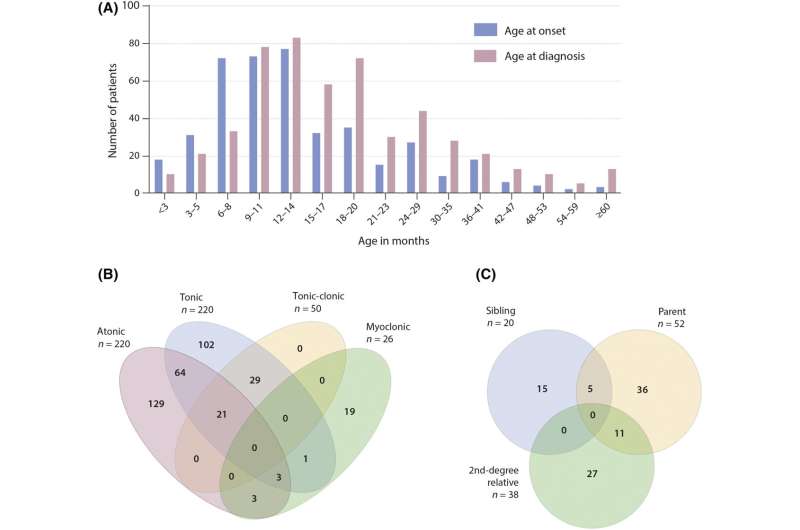This article has been reviewed according to Science X's editorial process and policies. Editors have highlighted the following attributes while ensuring the content's credibility:
fact-checked
peer-reviewed publication
trusted source
proofread
Children with breath-holding spells undergo unnecessary diagnostic interventions: Study

Breath-holding spells are common in young children and are benign. Yet children often undergo unnecessary diagnostic interventions when seeking medical care. This is because there are no national or international guidelines on how to assess children in these cases.
A team of researchers at Lund University, Sweden has now proposed guidelines to reduce the number of emergency and unplanned medical visits and to provide more equitable and structured care for children with breath-holding spells. The recommendations are published in the journal Acta Paediatrica.
Breath-holding spells are episodes during which a child temporarily stops breathing and are triggered by an emotional reaction, such as anger, fear or pain. They are common in young children and are harmless. Some children will have occasional spell, but it is more common for them to be recurrent.
About 25% of children aged 0 to 5 years will experience simple breath-holding spells, during which they do not lose consciousness. About 5% will have severe spells which result in a brief loss of consciousness. The older the child gets, the less frequent these episodes become and normally the child will have outgrown the condition by the time they start school.
"The pattern is quite clear. The spell is always caused by an emotion. Even if the child has fallen over and hurt themselves, it is still fear or pain that triggers the episode. The color of the child's face changes and turns pale or blue. The spell is short, lasting anywhere from a few seconds to a minute. These symptoms were described in the medical records of more than 90% of the children in our study," says Kees-Jan Pronk, a researcher at Lund University and pediatrician at Skåne University Hospital who led the study.
While breath-holding spells are a familiar concept in health care, there are no diagnostic criteria or guidelines on how to assess these children when they seek medical care. This leads to uncertainty about how to investigate and take care of the patients, and also what might be an appropriate follow-up. Breath-holding spells can also be frightening for family members and often results in urgent but unnecessary medical visits even after the child has been diagnosed.
Sanna Hellström Schmidt is a speciality registrar in pediatrics at Skåne University Hospital, a doctoral student at Lund University and the first author of the study.
"This is why we need clear diagnostic criteria, to standardize assessment and treatment. At present, many doctors treat these spells as something between a first-time seizure and a fainting episode, which is not correct."
The Lund University study examined more than 500 children who had been diagnosed with breath-holding spells in Skåne Region in Southern Sweden, between 2004 and 2018. Almost half of the children were investigated with an ECG, which measures the electrical activity of the heart, and a third with an EEG, which measures the electrical activity of the brain. None of these ECG and EEG investigations in the study showed abnormal test results which could explain the spells in these children.
"These unjustified diagnostic interventions are stressful for both children and their parents and can cause unnecessary worry. Furthermore, it uses health care resources that could be used elsewhere. At the same time, it is of course compulsory to perform an ECG in cases where there are symptoms or suspicion of disorders such as hereditary arrhythmias," says Hellström Schmidt.
It may seem a bit controversial to suggest fewer diagnostic tests, but with an accurate and detailed patient medical history and background information on what happened to the child, the doctor can easily diagnose breath-holding spells without these tests, argues Hellström Schmidt.
In a previous study, researchers showed that children with breath-holding spells are more likely than the general population to have low blood counts or iron deficiency. If the child is treated with iron supplements, the number of episodes may be reduced or stop altogether. However, there is uncertainty about treatment using iron supplementation and in reality, few children receive it. The new guidelines will make it clearer when children need an ECG and when they should have a blood test to check their blood count and iron status.
The next step for the researchers is a six-year study starting in 2024. This means that children in Skåne who seek medical care with typical symptoms of breath-holding spells will be assessed and treated according to the researchers' new guidelines. In this way, they hope to improve and validate the guidelines and ultimately increase their usefulness.
"We expect the number of ECG investigations to decrease significantly with our guidelines, and the use of EEG is not suggested at all. At the same time, we hope to see more blood tests to check for iron deficiency or anemia, which is desirable given the link between abnormal blood counts and breath-holding spells. We anticipate that the limited use only of ECG will make it possible to use the guidelines also in countries with less resources in health care compared to Sweden.
"It is also important to note that anemia and iron deficiency are more commonly observed in children in many of these low-income countries, and for these children it is an advantage that our guidelines propose more liberal blood sampling," concludes Kees-Jan Pronk.
More information: Sanna Hellström Schmidt et al, Overuse of EEG and ECG in children with breath‐holding spells and its implication for the management of the spells, Acta Paediatrica (2023). DOI: 10.1111/apa.17020




















